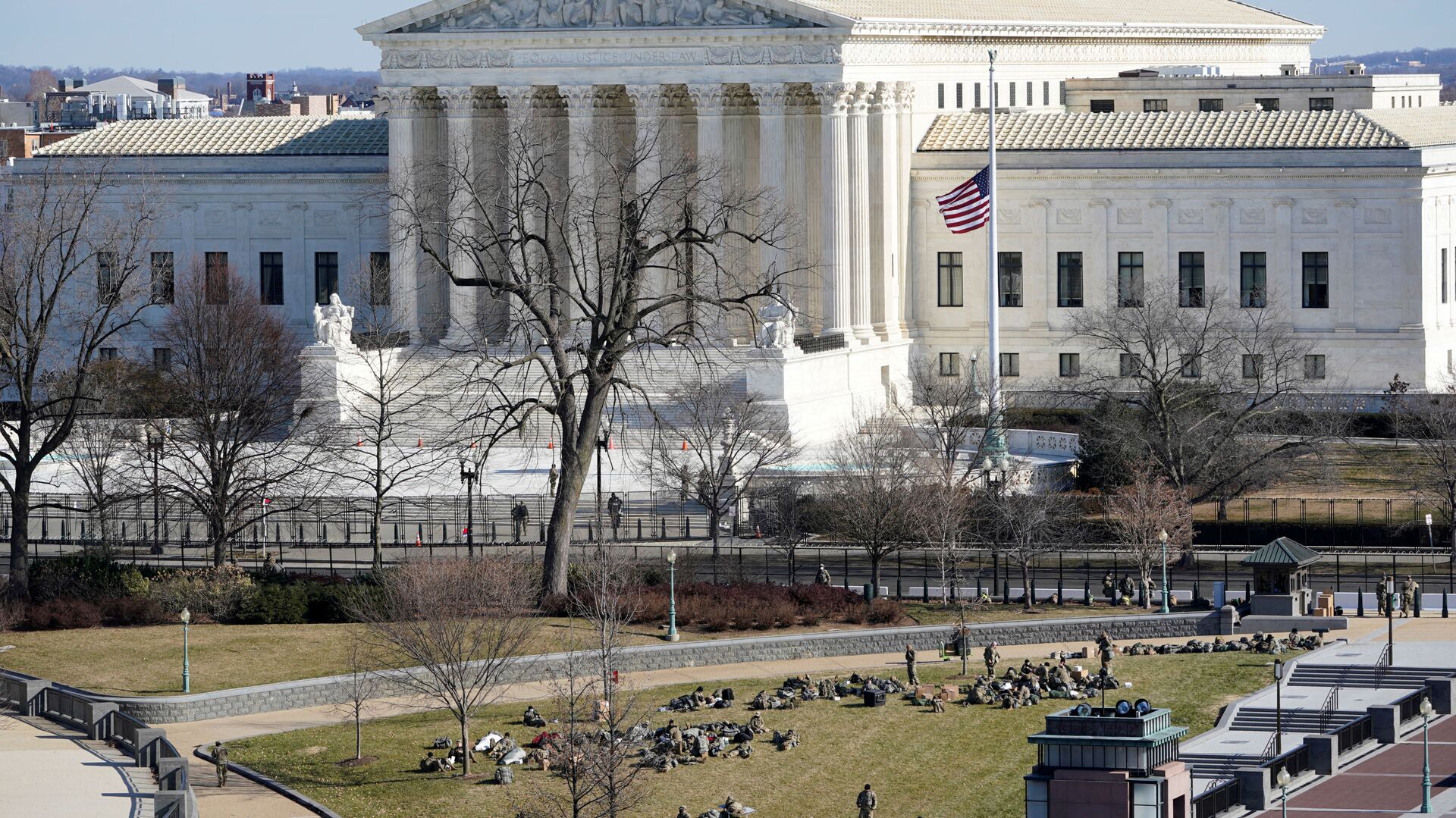What is the ‘Shadow Docket’ the US Supreme Court Uses to Fast-Forward Through Cases?

© REUTERS / Susan Walsh
Subscribe
The Biden administration was handed two stinging defeats this week by lightning-fast US Supreme Court rulings on the eviction moratorium and the “wait in Mexico” immigration policy. Now, one of the court’s justices is speaking out about the mechanism behind such quick and increasingly consequential rulings: the shadow docket.
“I can’t say never decide a shadow-docket thing,” Associate Justice Stephen Breyer told the New York Times on Friday. “Not ‘never.’ But be careful. And I’ve said that in print. I’ll probably say it more.”
According to the American Bar Association, the term “shadow docket” was only coined in 2015, but as a practice goes back to the creation of the court in 1789, when the US Constitution was adopted. Essentially, the shadow docket is a mechanism by which the court can hand down decisions quickly, without going through the process of hearing oral arguments, receiving amici curiae filings, or having to write out lengthy philosophical tracts explaining the jurisprudence underpinning their decision.
According to the Bar, the court only sparsely used the power before the 21st century, reserving it for “typically unremarkable scenarios” such as denying uncontroversial petitions for certiorari or emergency relief applications that clearly weren’t emergencies, or to grant parties more time to file briefs. The rare and exceptional cases that made it through were those that proved the applicant would suffer “irreparable harm” if their request wasn’t immediately granted.
Between 2001 and 2017, the court only granted eight such applications, according to a count by The Atlantic, but after Donald Trump assumed the presidency in 2017, the pace accelerated rapidly, with 41 applications accepted during his four-year tenure.
Moreover, the cases began to assume greater and greater importance, addressing contentious topics in American political discourse, such as the US-Mexico border wall and federal executions.
In the second half of 2020 alone, shadow docket orders allowed the federal government to execute six people, vacating stays and injunctions to clear the way for their executions as the Trump administration rushed to revive the practice in its final months in power for the first time in 17 years.
In February 2021, the House Judiciary Committee launched a probe into the spike in shadow docket cases, holding a hearing at which legal experts brought lawmakers up to speed on the practice.
The hearing around broad support among both Republicans and Democrats for reforming the way the judiciary functions - a power the legislature holds but which, according to Slate, it has often been reluctant to wield.
A major problem is that while the nation’s high court is supposed to guide lower courts with their jurisprudence, shadow docket rulings rarely supply adequate fodder for judges to interpret their own cases with. This problem arose recently in the US District Court for the District of Columbia when earlier this month, District Judge Dabney Friedrich found herself unable to interpret the Supreme Court’s June 29 ruling on the federal eviction moratorium because she didn’t know what the justices’ thinking was behind it.
On Thursday, the Supreme Court again issued a shadow docket ruling on the moratorium, striking it down with an eight-page ruling less than a week after it was appealed to the court.
The same process was used just two days earlier in a ruling forcing the Biden administration to reverse course and reinstate the Migrant Protection Protocol, better known as the “remain in Mexico” rule, which the Department of Homeland Security formally abolished in June. The ruling had just 101 words and fit on a single sheet of paper.
Congress has the power to force the court to hear certain cases, and can also regulate its conduct in some capacity. According to Slate, the problem with the shadow docket isn’t that it exists, but that the Supreme Court’s six-judge conservative majority has decided to stop following the rules about only using the shadow docket to avoid irreparable harm. Congress could force the court to follow those rules once again.
However, the likelihood of federal lawmakers taking on such a fight seems slim when Democrats cannot even take action against the filibuster, a Senate rule with even less staying power than the shadow docket and which can be erased outright if the Democrats had the willpower.

